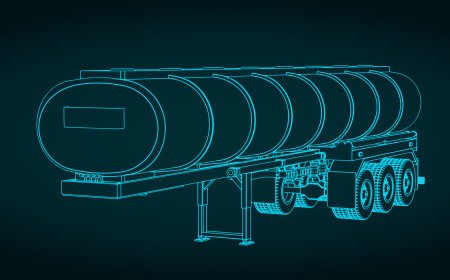Blasting Off: A Beginner's Guide to How Space Rockets Defy Gravity and Reach the Stars
Learn the basics of how space rockets launch and overcome gravity's pull to explore the cosmos. This beginner-friendly guide simplifies the science behind rocket launches for those curious about space exploration.

Introduction
The idea of launching a rocket into space has captivated the human imagination for centuries. Space rockets have become a symbol of human ingenuity and our unending desire to explore the cosmos. But how do these impressive machines manage to leave Earth's surface and break free from its gravitational pull? In this beginner-friendly article, we'll break down the fascinating process of rocket launches step by step to help you understand the science behind space exploration.
- Understanding Gravity and the Earth's Atmosphere
To comprehend how rockets work, we first need to understand gravity. Gravity is the force that attracts two objects towards each other, like the Earth and objects on its surface. Due to gravity, a rocket must exert a tremendous amount of force to lift off the ground and enter space.
Earth's atmosphere is another obstacle rockets face. The atmosphere consists of several layers, with air pressure and density decreasing as altitude increases. Rockets must be designed to endure the stresses of traveling through these varying layers and the friction they cause.
- Rocket Propulsion: Defying Gravity
Rockets rely on propulsion to generate the force required to lift off the ground and overcome gravity. They use engines that burn fuel to create a high-pressure gas, which is then expelled through a nozzle at the rocket's base. This action generates thrust, pushing the rocket upwards.
The amount of thrust generated must be greater than the rocket's weight to lift off. As the rocket gains altitude, the Earth's gravitational pull decreases, and less thrust is required to maintain upward motion.
- Rocket Stages: Climbing Higher
Most space rockets use a multi-stage design to reach space. Each stage contains its own engines and fuel. The idea behind staging is to shed weight as the rocket ascends, allowing it to continue climbing with less fuel and increased efficiency.
Once a stage's engines have consumed their fuel, they're no longer needed. The spent stage is then detached from the rocket, reducing its weight. The next stage ignites, propelling the rocket further. This process is repeated until the rocket reaches its desired altitude or orbit.
- Reaching Orbit: A Delicate Balance
For a rocket to enter orbit around the Earth, it must achieve a specific speed and altitude. This delicate balance allows the rocket to travel in a curved path around the Earth, with its forward momentum counteracting the pull of gravity.
To maintain orbit, the rocket's engines continue to fire, adjusting its trajectory and speed as needed. Once the rocket reaches the desired orbit, the engines shut down, and the spacecraft can begin its mission.
- Reentry and Landing: The Journey Home
Returning to Earth presents its challenges, as the spacecraft must withstand the intense heat and forces generated by reentry into the Earth's atmosphere. To protect the spacecraft and its occupants, heat shields and other protective materials are used.
During reentry, the spacecraft relies on its shape and onboard systems to slow down and maintain a controlled descent. Parachutes or propulsion systems are then used to ensure a safe landing.
Conclusion
Space rocket launches are a marvel of engineering and science, demonstrating humanity's ability to defy gravity and explore the cosmos. While the process may seem complex, it can be broken down into a series of steps: overcoming gravity with propulsion, ascending through the Earth's atmosphere, utilizing a multi-stage design, achieving orbit, and safely returning to Earth. As we continue to develop new technologies and expand our understanding of the universe, the future of space exploration holds limitless potential.
Disclaimer: The image(s) featured in this article are for illustrative purposes only and may not directly depict the specific concepts, situations, or individuals discussed in the content. Their purpose is to enhance the reader's understanding and visual experience. Please do not interpret the images as literal representations of the topics addressed.
What's Your Reaction?













































































































